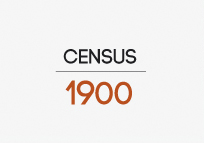




BELGIAN SOCIETY IN HISTORIC CENSUSES
Agricultural census 1895
Organisation of the census
The foundations of the census were established by the law of 11 September 1895 and the implementing order of 4 October 1895. Management of the census rested with the Ministry of Agriculture and Public Works, which was advised by the Belgian Central Commission of Statistics. It was executed by municipal authorities who received the necessary instructions and forms from the provincial administration and from district officers. The municipalities were responsible for appointing census agents, distributing individual census forms to farmers and collecting the completed forms. A temporary bureau was established in each province for analysing the census maps and checking the results. This bureau drew up general overview tables.
Those subject to the census: all families who worked the land as owners or tenants, the owners of wastelands and woods, everyone who owned farm animals that were distinguished in the census (including luxury and other horses), and individuals who hired out agricultural machinery to farmers. People, institutions or organisations that met these criteria had to provide the requested information. The law stipulated fines for refusal to participate and for fraud.
Data related to the surface area of the crops, the agricultural population, the livestock, the births and deaths of cattle, the machines and fertilisation were acquired based on the information that the farmers had to pass on. The figures related to crop productivity originated from the provincial Commissions for Statistics. Wages and land prices were calculated by the municipal authorities and checked by the provincial agriculture commissions. The statistics related to woods and wastelands were affected by an intervention of the Water and Woods Administration.
The census took place at the end of 1895. According to the instructions, the forms had to be distributed to those subject to the census between December 1 and December 20. They were collected on-site by census agents during the first two weeks of 1896. These agents, who were recruited from a pool of teachers and civil servants, were entitled to financial compensation for each completed form.
- Organisation of the census
- Source criticism
- Content of the internet tables
- Concepts